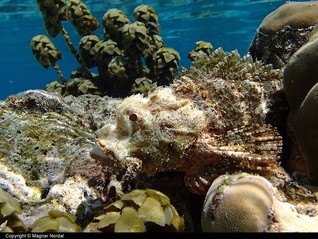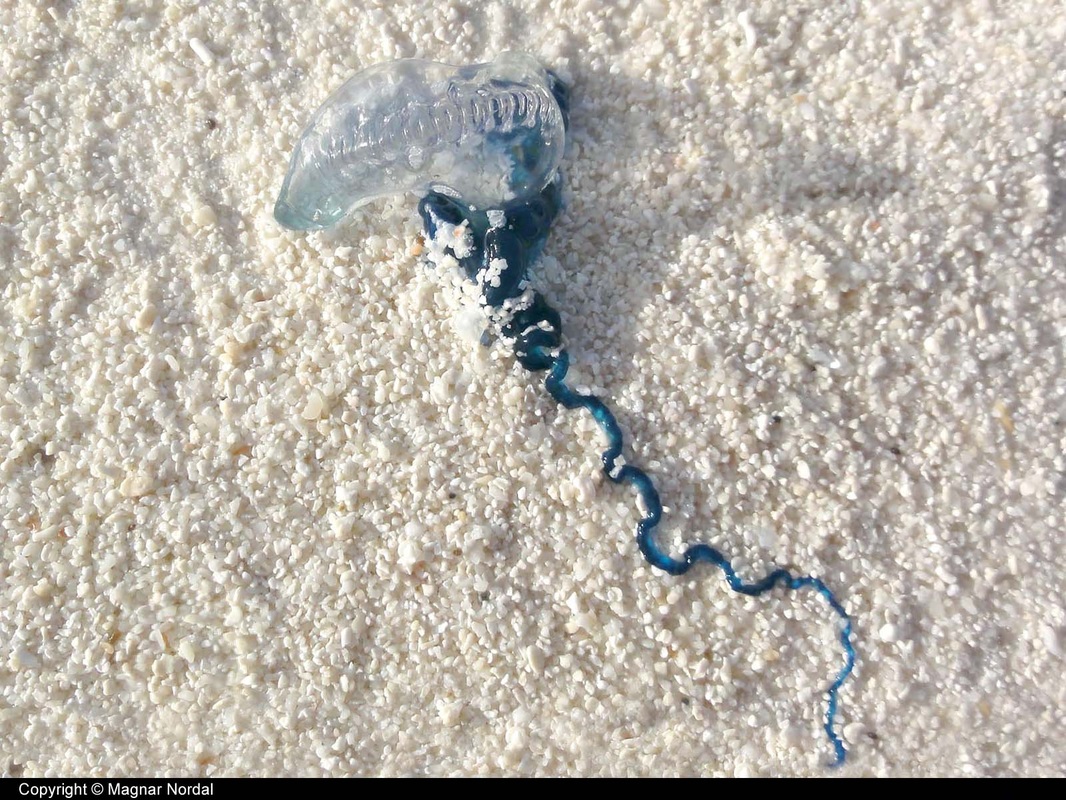First aid
|
Some years ago was I snorkeling in the Caribbean. Suddenly did I feel a burning pain on my arm. I had hit some tentacles from a jellyfish (which I never saw). When I returned to the beach, I had painful, red stripes over my arm. A local man gave me the following advise: "Put your arms in the sand, and the pain will go away." It did.
Jellyfish and Scorpionfishes have a venom that disappears when the area is heated up to 42-45 degrees Celsius (about 110 degrees Fahrenheit) for 15-20 minutes. You can use warm sand, warm water or anything else that is warm (not burning). It is not recommended to use vinegar, as it will worsen the symptoms. However, if you have been stung by a Stonefish, you will need medical care at a hospital, because the venom is so strong that it can be lethal. |
|


